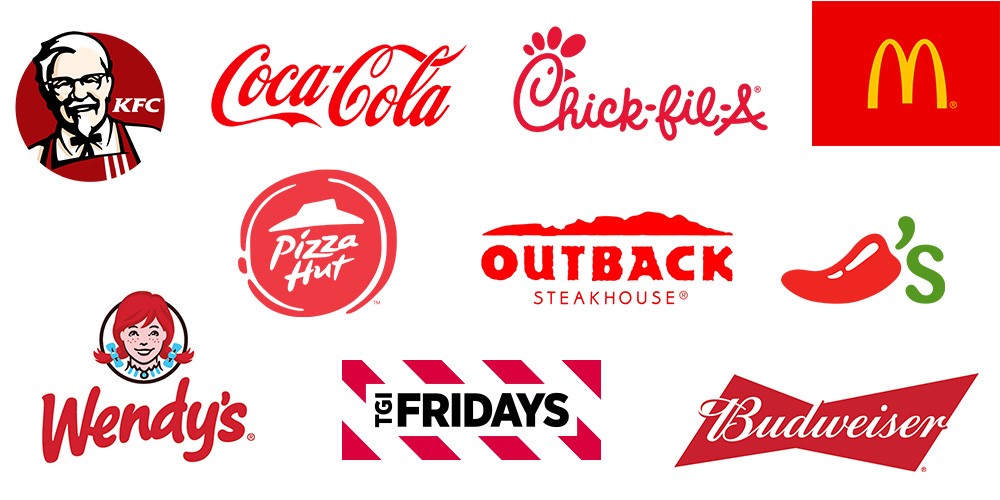In the world of marketing, color plays a crucial role in shaping brand identity and influencing consumer behavior. Among the vast spectrum of colors available, bright red stands out as one of the most powerful and attention-grabbing choices. Bright Red Branding has become a popular strategy for businesses looking to make a bold statement and create a memorable brand presence. By understanding the impact of bright red on branding and how to use it effectively, companies can enhance their visibility, evoke strong emotions, and drive customer engagement.
The Psychology Behind Bright Red Branding
Bright Red Branding taps into the psychological effects of color, leveraging the strong emotional and psychological responses that red elicits. Red is a color that naturally draws attention. This makes it an ideal choice for brands that want to stand out in a crowded market. When consumers see the color red, it often triggers feelings of excitement, passion, and urgency. These emotions can lead to increased brand recall and a stronger connection with the audience.
Color psychology suggests that people associate red with energy, action, and confidence. These qualities make bright red an effective color for brands that want to project a dynamic and assertive image. For example, companies in industries such as food and beverage, automotive, and entertainment often use bright red to convey a sense of vitality and enthusiasm. By incorporating bright red into their branding, these companies can create an image that encourages action.
Moreover, Bright Red Branding can also evoke a sense of urgency and importance. This is particularly useful for businesses that want to drive immediate action. An example would be making a purchase or signing up for a service. Studies have shown that the color red increases heart rates and creates a sense of excitement. This can motivate consumers to take action more quickly. This psychological effect makes bright red a popular choice for call-to-action buttons, sale announcements, and promotional materials.
The Impact of Bright Red Branding on Visibility
One of the most significant advantages of Bright Red Branding is its impact on visibility. Red is a highly visible color that stands out in both digital and physical environments. When used in branding, bright red can capture attention quickly and make a lasting impression on consumers. This heightened visibility is particularly important in today’s competitive market, where brands need to differentiate themselves from their competitors.
In digital marketing, bright red is often used in website design, social media, and online advertisements. This is because it draws attention to key elements. For example, a brand might use bright red in its logo, headlines, or call-to-action buttons. This is to ensure that these elements stand out on the page. This strategic use of color can increase click-through rates, drive engagement, and ultimately lead to higher conversions.
In addition to digital applications, Bright Red Branding is also effective in physical settings. Examples of this are retail stores, packaging, and signage. Red’s ability to stand out from other colors makes it an ideal choice for products that need to catch the eye of shoppers. Whether it’s a red product label on a crowded shelf or a bright red storefront, this color can help a brand gain a competitive edge. It does this by attracting more attention and encouraging impulse purchases.
Furthermore, bright red is often associated with boldness and confidence, which can enhance brand perception. When consumers see a brand using bright red, they may perceive it as more assertive and self-assured. This perception can lead to increased trust and loyalty. This is because consumers are more likely to align themselves with brands that project a strong and confident image.
Strategic Use of Bright Red Branding
While Bright Red Branding offers many benefits, it is essential for businesses to use this color strategically to achieve the desired impact. The key to successful Bright Red Branding lies in balancing boldness with subtlety. This ensures that the color enhances the brand’s message without overwhelming it.
One important consideration is the context in which bright red is used. Because red is such a powerful color, it can easily dominate a design if not used carefully. To avoid overwhelming consumers, brands should use bright red selectively. The focus should be on key elements such as logos, headlines, or specific call-to-action buttons. This targeted use of red allows the color to draw attention where it is most needed. It should be done without detracting from the overall design.
Another strategic approach to Bright Red Branding is to combine red with complementary colors that balance its intensity. For example, pairing bright red with neutral colors such as white, black, or gray can create a sophisticated and modern look. Alternatively, combining red with contrasting colors like blue or green can create a dynamic and energetic visual impact. By experimenting with different color combinations, brands can find the perfect balance that reflects their identity and resonates with their audience.
It is also important for businesses to consider their target audience when implementing Bright Red Branding. While red is generally a universally appealing color, its impact can vary depending on cultural and demographic factors. For instance, red may be associated with good luck and prosperity in some cultures, while in others it might be linked to danger or caution. Understanding the cultural and psychological associations of red can help brands tailor their use of color to better connect with their audience.
Case Studies of Successful Bright Red Branding
Several well-known brands have successfully utilized Bright Red Branding to create a strong and memorable identity. One such example is Coca-Cola, a brand that has become synonymous with the color red. Coca-Cola’s use of bright red in its logo, packaging, and marketing materials has helped the brand maintain a consistent and recognizable image for over a century. The color red conveys the brand’s energy, enthusiasm, and timeless appeal, making it a key element of Coca-Cola’s identity.
Another example of successful Bright Red Branding is Target, the popular retail chain. Target’s bright red bullseye logo is instantly recognizable and has become a symbol of the brand’s commitment to quality and value. The use of red in Target’s branding creates a sense of excitement and urgency, encouraging customers to shop and explore new products. This consistent use of red across all marketing channels has helped Target build a strong brand identity that resonates with consumers.
In the automotive industry, Ferrari is a prime example of how Bright Red Branding can enhance a brand’s image. Ferrari’s iconic red color, known as “Rosso Corsa,” is closely associated with the brand’s racing heritage and high-performance vehicles. The use of red in Ferrari’s branding conveys speed, power, and luxury, making it an integral part of the brand’s identity and appeal.
These examples demonstrate how Bright Red Branding can be a powerful tool for creating a memorable and impactful brand identity. By leveraging the psychological and emotional effects of red, businesses can enhance their visibility, connect with their audience, and build a lasting brand presence.
Potential Challenges of Bright Red Branding
While Bright Red Branding offers many advantages, it is not without its challenges. One potential drawback is the risk of overuse, which can lead to visual fatigue or desensitization. If a brand relies too heavily on red in its branding, it may lose its impact over time as consumers become accustomed to seeing it. To avoid this, brands should use red strategically and in combination with other colors to maintain visual interest and engagement.
Another challenge is ensuring that bright red aligns with the brand’s overall message and values. Red is a bold and assertive color, which may not be suitable for every brand or industry. For example, brands that want to convey a sense of calmness, serenity, or luxury may find that other colors, such as blue or purple, are more appropriate. It is important for businesses to carefully consider their brand personality and target audience before adopting Bright Red Branding.
Additionally, Bright Red Branding may not resonate with all consumers, particularly those who associate red with negative emotions or experiences. For instance, red can be associated with danger, warning, or aggression in some contexts. To address this, brands should conduct market research and testing to ensure that their use of red is well-received by their target audience.
How to Implement Bright Red Branding Effectively
For businesses looking to implement Bright Red Branding effectively, it is important to start by defining the brand’s identity and goals. Understanding the brand’s personality, values, and target audience is essential for determining how bright red can enhance the overall brand message.
Next, businesses should experiment with different shades of red and color combinations to find the perfect balance. Bright red can be paired with neutral tones for a sleek and modern look or combined with contrasting colors for a more vibrant and energetic impact. Testing different color schemes can help businesses identify the most effective use of red in their branding.
It is also important to use bright red consistently across all brand touchpoints, including logos, packaging, websites, and marketing materials. Consistency in color usage helps reinforce brand recognition and builds a cohesive brand image. However, brands should also be mindful of the context and use red selectively to avoid overwhelming consumers.
Finally, businesses should monitor the impact of Bright Red Branding through customer feedback, sales data, and brand perception metrics. Regularly assessing the effectiveness of the color strategy allows businesses to make adjustments as needed and ensure that their branding remains fresh and relevant.
Conclusion
Bright Red Branding is a powerful tool that can significantly enhance a brand’s visibility, appeal, and emotional connection with consumers. By understanding the psychological effects of red and implementing it strategically, businesses can create a bold and memorable brand identity that stands out in a competitive market. However, it is important to use bright red thoughtfully and in alignment with the brand’s values and goals. When executed effectively, Bright Red Branding can drive customer engagement, build brand loyalty, and contribute to long-term business success.


